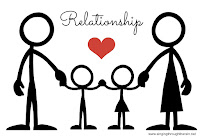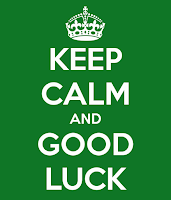It is always said, "A Man is a social animal", who relish meeting others of the same kind, making friends and establishing long term relations. In our lifetime, we meet thousands of people, remember few hundreds, but develops a long-term friendship and relations with only handpicked out of those hundreds. This social behavior and ability to establish long-term relations are not only visible in our personal life but in every decision throughout our life. This is the reason why we prefer one brand over other despite both giving the same benefits because we make a relation with them.
Since our infanthood days, we developed the relation of brother/sister, niece/nephew with our relatives based on our parents' relations with their friends and relatives. We got our uncle & aunt because our parents chose to develop long term relations with them from their hundreds of college friends. In a similar manner, we developed a relation with "Jhonson & Jhonson" because our parents chose J&J over other brands and established a relation of trust for us. We looked upon "Nestle" with trust when we were served Cerelac three times a day and were not ready to accept anything else if ever tried by our parents.
Till the time we went to kindergarten, relations with people and brands were gifted by our parents and we automatically developed long term relations with them, but as we began going school, met new kids, developed an ability to pick and choose both people and brands.
We started demanding "Disney" characters to play with, "funskool" toys and "Hotwheels" cars to feel proud of our game collection. We developed a relation with our favorite "Natraj" pencil, sharpener, and eraser and were excited for the art lecture to use the new pack of "Camlin" crayons. We deliberately rough handled our old school shoes to buy a new pair of "action" school shoes, our first "pilot" pen when we entered 6th standard.
As we reached adolescence, we were already having the bunch of close friends and certain brands with which, relations will be a lifetime, but also had faced many heartbreaks, loss of trust both by people and brands. Sometimes we changed our priorities for people, and switched to other brands, and sometimes people change theirs and brands left us as they discontinued or lost their identities.
We realized the importance of relations with people and brands when our best friend and "Old monk" gave us his shoulder to exude our tears on our first breakup. We became responsible when our parents gifted a "Raymond" suit for our first job interview and we felt accomplished with the first salary credit notification from "HDFC" bank in our "Nexus" phone.
When we will become parents, we will trust the same brands which our parents gifted us when we were infants, and this led to generational relations with brands, which is best for any brand. In today's world of brand flood and communication tsunami, it is difficult for any brand to establish long term relations with consumers and in this scenario, if any brand is abe to establish relations with more than one generation of its consumers, it becomes immortal.
Human relations with brands changed according to human life phases from infanthood to adolescence to parenthood. At inception, we received relations from our parents, then learned to develop relations but were not able to understand their importance and with time realized the grandness of relations and established life-long relations.
"A man is known by the people with which he spends time", and a man is known by the brands he carries. This ability to reflect the personality of a man in Brand makes the idea of celebrity endorsement so successful. Brands utilize charming personalities of Celebrities to develop brand personalities which become the most important reason for a common man to carry that brand. We want to add that personality element offered by the brand to our personality and as a result, choose different brands which complement each other and develop our overall personality. Here brand act as the medium for human-human relation.
In return, brands also get something from our personality when we carry them. Brands built their personality further with the help of its users when a user carries it with other brands. Here human act as the medium for Brand-Brand relation and one brand utilizes personality of another brand to further built its own.
Just after parking your range rover endeavor, you received an important call on your apple i phone 6S, and suddenly looked at your omega and realized you are late for the meeting, rushed to the meeting room and at the end you happily took out parker from your Van Heusen suit and signed the contract. Here, you carry brands like apple, omega, parker, Van Heusen and range rover to add their personality elements to your personality. At the same time, all brands complemented each other and utilizes each other's personalities to develop their own personalities.
Man builds relations with bands and brands builds relations with other brands and thus, the chain of human brand relationship keeps on the building.
Since our infanthood days, we developed the relation of brother/sister, niece/nephew with our relatives based on our parents' relations with their friends and relatives. We got our uncle & aunt because our parents chose to develop long term relations with them from their hundreds of college friends. In a similar manner, we developed a relation with "Jhonson & Jhonson" because our parents chose J&J over other brands and established a relation of trust for us. We looked upon "Nestle" with trust when we were served Cerelac three times a day and were not ready to accept anything else if ever tried by our parents.
Till the time we went to kindergarten, relations with people and brands were gifted by our parents and we automatically developed long term relations with them, but as we began going school, met new kids, developed an ability to pick and choose both people and brands.
We started demanding "Disney" characters to play with, "funskool" toys and "Hotwheels" cars to feel proud of our game collection. We developed a relation with our favorite "Natraj" pencil, sharpener, and eraser and were excited for the art lecture to use the new pack of "Camlin" crayons. We deliberately rough handled our old school shoes to buy a new pair of "action" school shoes, our first "pilot" pen when we entered 6th standard.
As we reached adolescence, we were already having the bunch of close friends and certain brands with which, relations will be a lifetime, but also had faced many heartbreaks, loss of trust both by people and brands. Sometimes we changed our priorities for people, and switched to other brands, and sometimes people change theirs and brands left us as they discontinued or lost their identities.
We realized the importance of relations with people and brands when our best friend and "Old monk" gave us his shoulder to exude our tears on our first breakup. We became responsible when our parents gifted a "Raymond" suit for our first job interview and we felt accomplished with the first salary credit notification from "HDFC" bank in our "Nexus" phone.
When we will become parents, we will trust the same brands which our parents gifted us when we were infants, and this led to generational relations with brands, which is best for any brand. In today's world of brand flood and communication tsunami, it is difficult for any brand to establish long term relations with consumers and in this scenario, if any brand is abe to establish relations with more than one generation of its consumers, it becomes immortal.
Human relations with brands changed according to human life phases from infanthood to adolescence to parenthood. At inception, we received relations from our parents, then learned to develop relations but were not able to understand their importance and with time realized the grandness of relations and established life-long relations.
"A man is known by the people with which he spends time", and a man is known by the brands he carries. This ability to reflect the personality of a man in Brand makes the idea of celebrity endorsement so successful. Brands utilize charming personalities of Celebrities to develop brand personalities which become the most important reason for a common man to carry that brand. We want to add that personality element offered by the brand to our personality and as a result, choose different brands which complement each other and develop our overall personality. Here brand act as the medium for human-human relation.
In return, brands also get something from our personality when we carry them. Brands built their personality further with the help of its users when a user carries it with other brands. Here human act as the medium for Brand-Brand relation and one brand utilizes personality of another brand to further built its own.
Just after parking your range rover endeavor, you received an important call on your apple i phone 6S, and suddenly looked at your omega and realized you are late for the meeting, rushed to the meeting room and at the end you happily took out parker from your Van Heusen suit and signed the contract. Here, you carry brands like apple, omega, parker, Van Heusen and range rover to add their personality elements to your personality. At the same time, all brands complemented each other and utilizes each other's personalities to develop their own personalities.
Man builds relations with bands and brands builds relations with other brands and thus, the chain of human brand relationship keeps on the building.















































